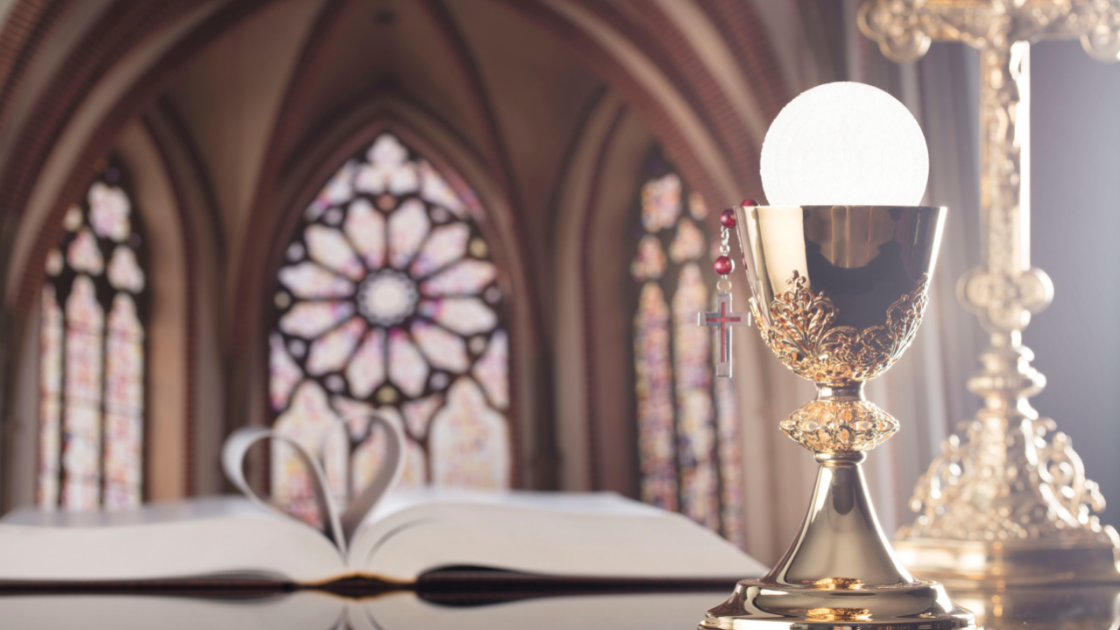Disposition, Catholic Style
As someone who grew up Catholic with a former Benedictine nun for a mother (yes, seriously) and is now a writer at Connecting Directors — a publication that celebrates modernization in deathcare — it’s intriguing, and kind of tough, actually, to write about the Catholic church’s proclaimed positions on various deathcare issues. Over the last few years, it seems the church has been especially vocal about how it feels about the “newest” methods of disposition.
The Catholic faith traces its roots to Jesus Christ and the Apostles, and the number of Catholics in the world (nearly 1.1 billion) is more than all other Christians combined. In other words, official decrees from the Catholic church can be quite influential, with significant repercussions on the impacted businesses — in this case, deathcare providers.
The preferred disposition method of the Catholic church is traditional burial or entombment in a Catholic cemetery — in other words, the way it’s always been done. However, over the last several decades, the church has had to expand upon its acceptable options and relax its view on some alternative methods, including cremation.
Catholics and flame cremation
For centuries, Catholics looked upon cremation as “a pagan practice that dishonored the body and denied the hope of eternal life.” Theologically, Catholics believe in the eventual resurrection of the body and the dignity of the body. A choice to burn a body was seen as turning one’s back on both beliefs.
Cremation was actually banned by the church, meaning those who chose cremation were to be denied a Christian burial altogether. However, the church changed its policy in 1963, lifting the ban for practical, non-theological reasons, including the growing expense of traditional burials and overcrowding cemeteries.
In 1997, the church issued an addendum to the cremation canon to address the disposition of cremated remains. Not surprisingly, they prefer permanent placement and memorialization over scattering. According to the canon, every aspect of final disposition should be approached with the respect deserved by the human body from which they came, including using “a worthy vessel to contain the ashes,” and “appropriate placement and transport” to be “buried in a grave or entombed in a mausoleum or columbarium.” Scattering or keeping cremains in a home are “not the reverent disposition that the Church requires.” Lastly, the canon requests “appropriate means for recording with dignity the memory of the deceased” with a plaque or stone with the deceased’s name.
What about alkaline hydrolysis?
Although considered a form of cremation, alkaline hydrolysis is considered separately from flame cremation by the Catholic church. The Vatican has not specifically addressed water cremation, but in 2011 the Archbishop of Washington called it “unnecessarily disrespectful of the human body.” As more and more states have legalized alkaline hydrolysis, local Catholic bishops have issued statements on the church’s stance.
It seems that the church’s biggest problem with water cremation is that although bone fragments are collected, pulverized, and returned to the family, the “liquid remains are poured down the drain” to be “disposed of through the sewer system.” As such, this process is deemed neither dignified nor respectful to the deceased human body. At least one Catholic authority — the Archdiocese of St. Louis — believes that the church might reconsider its position on alkaline hydrolysis if “another suitable means of disposing of the liquid remnant can be established.”
Green burial is acceptable
With the church’s preference of traditional burial, it stands to reason that green, or eco-friendly, burial would be acceptable, as long as the final resting place was a Catholic burial ground. This disposition method also agrees with Pope Francis’ commitment to protecting the environment, our “common home.” As green burial has become better understood and more popular within the general population, various Catholic authorities have indeed issued their approval of the practice.
The Green Burial Council has shared the opinion of Father Charles Morris, former administrator of the first Catholic cemetery certified by the GBC. In 2012, Father Morris said, “There is no more appropriate way to honor our Catholic Christian tradition of Resurrection faith than by fitting into a natural cycle of death and rebirth where we honor both our loved ones and God’s good earth.”
According to the GBC, a 2011 survey of Catholics in the United States indicated that 80% would prefer green burial. It’s suggested that this option is a more acceptable alternative to cremation for Catholic families looking to save money. Also, as eco-friendly burial doesn’t include embalming, it is not invasive to the body. Lastly, green burial provides more of an opportunity for families to participate in the healing process of a graveside funeral service.
Thoughts on natural organic reduction
This line of thought leads one to believe that natural organic reduction (NOR), which is now legal in five states, would also be widely accepted by the Catholic church. However, that has not been the case.
Catholic authorities in California, where NOR has been approved, and New York, where legislation is pending, have recently issued their opinions on this disposition method — and it seems that certain aspects of NOR, as well as a commonly-used term for the process, are making it unacceptable in the eyes of the church.
Last month, the New York State Catholic Conference issued a statement urging New York Catholics to oppose the state’s pending legislation on “human composting” — another name for NOR. “Composting is something we as a society associate with a sustainable method of eliminating organic trash that otherwise ends up in landfills,” Executive Director Dennis Poust stated in November. “But human bodies are not household waste, and the bishops do not believe that the process meets the standard of reverent treatment of our earthly remains.”
In September, California’s conference weighed in. According to the Catholic News Agency, California Catholic Conference Executive Director Kathleen Domingo “said the use of a body composting method originally developed for farm animals creates an ‘unfortunate spiritual, emotional, and psychological distancing from the deceased’” and that the process “‘reduces the human body to simply a disposable commodity.’”
The “composting” aspect of NOR seems to be the sticking point. Despite being environmentally friendly, the final disposition of the soil containing the transformed remains on private land doesn’t agree with the Catholic church’s edicts against scattering remains and their preference for permanent memorialization in sacred ground. Of course, families actually do have the option of interring the remains in a Catholic cemetery, and these are only two opinions made during the infancy of natural organic reduction.
What’s next?
It’s possible that as more states work on their own NOR legislation and more Americans become familiar with the process and the practices of its practitioners, the church may reconsider its position — just as it did with cremation in the 1960s. For the time being, though, Catholics are simply more comfortable with traditional and green burials and flame cremation (for practical reasons and in the absence of other alternatives).




